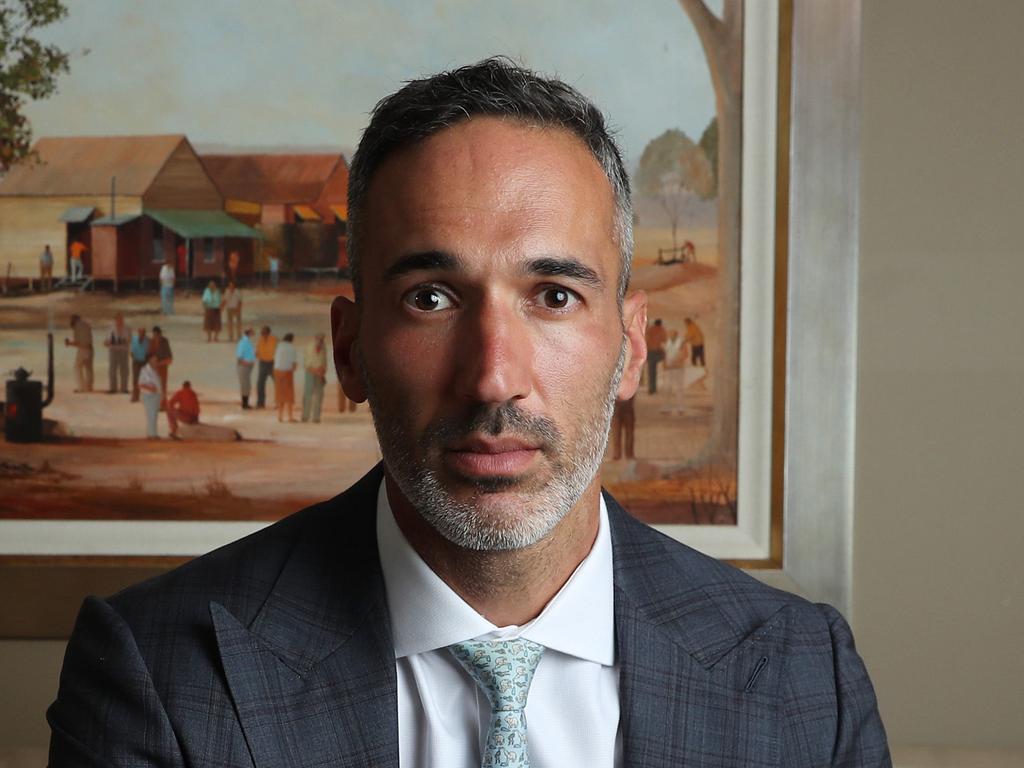Newspoll: Labor suffers falls in key demographics but Coalition not the beneficiary
The next election looms as a tale of two continents, with the Albanese government in decline in the east as voters flock to independents and minor parties, and Labor’s migrant base deserts it.

Labor’s primary vote has fallen to 30 per cent in NSW, marking a historical low with a swing against the Albanese government potentially enough to cost it three to four seats in the largest state alone.
An exclusive demographic and state by state Newspoll analysis shows Labor facing a partial rebellion among middle-aged voters and ethnic communities with statistically significant shifts against Labor in these key demographics over the past three months.
This phenomenon now spreads across the two largest states, on the basis of seats, further entrenching the likelihood that if these numbers were reflected at an election, Labor would lose its majority.
With the Coalition maintaining a lead in NSW, sizeable swings against Labor have also begun in Victoria, where the Labor brand has also been damaged by the legacy of the Andrews government, with the federal Labor primary vote dipping to a new low of 31 per cent.
This is now below the party’s national average, in once its strongest state.
Labor has also lost ground in Western Australia, the state that catapulted it to victory in May 2022 on the back of the then popular McGowan state Labor government, leading to the potential loss of up to two seats.
With cost-of-living concerns continuing to put the major parties under pressure, voters in the 50 to 64-year-old demographic have swung sharply against the Labor government with a four-point fall in primary vote among these voters.
This has lifted the Coalition two-party-preferred lead in this age group from 51-49 per cent to 55-45 per cent since June.
Peter Dutton has also leapfrogged Anthony Albanese for the first time as the preferred prime minister among this age group.
Among 35-to-49 year-olds, often regarded as Middle Australia or the mortgage belt demographic, the Coalition has also narrowly moved ahead of Labor on primary vote for the first time since the last election, albeit on an overall decline in support for both major parties.
With a large five-point swing towards minor party and independents, it is this demographic that has again emerged as the key election battleground that may decide the outcome of the next election.
A similar story of decline for Labor is also emerging among migrant and ethnic communities, with Labor suffering a five-point fall in primary vote amid a flight to independent and minor parties.
This unprecedented turn against Labor from its traditional ethnic voter base could be attributed partly to the rise of a Muslim party vote in eastern states in response to the Israel/Hamas conflict, but cost-of-living concerns are also acute in this largely working-class demographic.
The sharp decline in primary vote support for Labor in this demographic is closely aligned to a fall in personal support for Anthony Albanese, with a five-point decline in his rating as preferred prime minster, with minimal gain for the Coalition or Dutton.
The only improvement for Labor on a demographic basis has been among younger voters – those aged between 18 and 34 – with a rise in support for minor parties and subsequent preference flows boosting Labor’s two-party-preferred vote to 62-38 per cent.
The latest quarterly Newspoll analysis shows a significant splintering of the major party vote in the eastern states as voters in NSW and Victoria flock to minor parties and independents.
Labor’s primary vote in NSW is now lower than its election result for the state in 2013 after the Gillard government was forced into a power-sharing arrangement with Greens and independents.
Labor’s losses are not all transferring into gains for the Coalition. It has also fallen two points to 38 per cent in NSW, with a three-point lift in support for minor parties including the teal independents, a one-point gain for One Nation to 7 per cent and a similar gain for the Greens, which are now on 12 per cent.
NSW already has the largest swag of independent MPs in the federal parliament, with Labor facing new challenges in key western Sydney seats from Muslim parties and a new western Sydney network of independents.
With redistributions affecting the margins of some key Labor-held seats, based on the statewide swing the government would need to defend up to four seats including Gilmore, Bennelong, Robertson and Paterson, all of which are now at risk.
The contest has also narrowed considerably in Victoria, with Labor’s primary vote falling two points to 31 per cent amid a two-point gain to 38 per cent for the Coalition.
This has reduced Labor’s two-party-preferred lead of 54-46 – which has historically been more elevated due to a strong Greens vote – to 52-48.
It is a different story for the mining states of Western Australia and Queensland, however, with an improvement in primary vote support for both major parties with a swing away from minor parties and independents.
In Queensland, both the Coalition and Labor have gained three points apiece on their primary vote – 43 per cent and 30 per cent – while One Nation, the Greens and other minor parties all fell, leaving the two-party-preferred vote unchanged at 54-46 in favour of the LNP.
In WA, Labor gained two points to 36 per cent and the Coalition lifted two points to 39 per cent, with the two-party-preferred vote of 52-48 in favour of Labor remaining unchanged from the last analysis period, although down on its election result.
Labor’s only improvement was in South Australia – which hosts the most popular state Labor premier in the country – and where its primary vote is now one point ahead of the Coalition at 36 per cent to 35 per cent.
The two-party-preferred vote has improved for Labor marginally to 54-46 per cent, although this would not be enough to secure it another seat.
While the Newspoll demographic analysis covers all parts of Australia, breakouts are provided only in the mainland states and not in Tasmania and the territories because of the smaller survey sample sizes.
The demographic and state by state analysis is based on Newspoll surveys conducted between July 15 and September 20, with 5035 voters throughout Australia interviewed online.
Individual state sample bases range from 374 to 1592 voters.






To join the conversation, please log in. Don't have an account? Register
Join the conversation, you are commenting as Logout